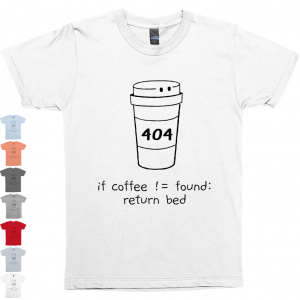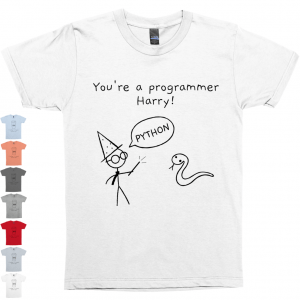Substantial developments in machine learning techniques have led to several newsworthy innovations. Self-driving cars are a great example.
This innovation was achieved by teaching algorithms to replicate the way that human beings learn.
There are two types of learning styles, associative and non-associative that have had a significant impact.
By teaching the machine to think humanly, we can leverage the mighty processing power to solve human problems.
But first, let’s spend a little bit of time understanding the difference between associative and non-associative learning.
What are the different learning styles?
As discussed we are going to focus on two learning styles. These learning styles both relate to machine learning in different ways.
1. Non-associative Learning
Below is the dictionary definition of non-associative learning:
As applied to animal behavior, is instances where behavior toward stimulus changes in the absence of any apparent associated stimulus or event (such as a reward or punishment).
In non-associative learning, the person is being trained on how to respond to a certain situation. There is a right and a wrong answer.
Supervised learning algorithms use non-associative learning. These algorithms learn from the training data. Primarily, they are taught based on the assumption there is a right or wrong answer.
2. Associative Learning:
According to the dictionary definition, ‘associative learning is any learning process in which a new response becomes associated with a particular stimulus.’
What this means is that the person is learning from experience.
Unsupervised learning techniques in machine learning are an example of associative learning.
How to apply Non-Associative Machine Learning
In non-associative machine learning, you use the training data set to teach the machine learning algorithm how to predict on the data set.
This is instead of letting the algorithm learn for itself on what the outcome should be.
In other words, it represents the process of supervised machine learning.
However, if today you are more interested in seeing some examples of this type of non-associative learning in action, I have listed some below.
3 Examples of Non-Associative Learning
1/ Regression Analysis
The classic example of supervised ML using regression is the prediction of house prices.
For example, the number of rooms a house has (input) and the price of the house (output).
This training data will teach the machine how the number of rooms and price are related, allowing it to make predictions of the output, cost of a house, based on the inputs, number of rooms.
2/ Classification Analysis
If we move onto classification analysis, we begin to use machine learning to determine which group an object belongs to. One of the classic examples is whether or not a tumor is malignant or benign. Or you could use it to say yes or no if someone is likely to pass an exam.
Another example is, will this person develop diabetes? Yes or No.
In classification analysis, the labeled training data set will have a sample set of people and their characteristics alongside whether or not they developed diabetes.
This training data is there to teach the machine how different characteristics of a person’s genetics or lifestyle contribute to whether or not they would get diabetes.
Based on these inputs (features) the model will then predict, the probability they will get diabetes.
Depending on the type of classification algorithm used, the probability of each algorithm will be calculated differently.
3/ Computer Vision
The final example is computer vision using convolutional neural networks.
Convolutional Neural Networks were developed to be able to encode and process image data within a deep learning framework.
Convolutional Neural Networks allow computers to process image data. One example of a project using this technique is classifying dog breeds from images.
Want to know what type of dog you just passed on the street and fell in love with? Well, now you can thanks to your machine learning skills!
Now let’s move onto associative learning.
Associative Machine Learning Examples.
Associative learning is a more familiar way of learning for human beings. It involves learning by reacting to a stimulus.
Associative learning is used in unsupervised machine learning.
Clustering algorithms are a great example of associative learning.
One of the most popular types of clustering algorithms is K-Means clustering.
K-Means Clustering – Learning by Association
The K-Means clustering algorithm is an iterative process where you are trying to minimize the distance of the data point from the average data point in the cluster.
Put simply you are trying to create the closest possible clusters of data.
To start the algorithm, you define the number of clusters you need and choose the starting mean data points.
The algorithm will then cluster the data points around the mean depending on the distance they are from the mean.
How to identify fake news
An example of K-Means clustering algorithms in the real world is the fight against fake news.
In a paper recently published by two computer science students at the University of California, Riverside, they are using clustering algorithms to identify fake news based on the content.
The algorithm they have developed uses the content of fake news and robust natural language processing and clustering algorithms to identify fake news.
The algorithm works by taking in the content of the fake news article, examining the words used and then clustering them. These clusters are what helps the algorithm determine which pieces are genuine and which are fake news.
The algorithm can identify the fake news by the language used.
So how do you leverage these different learning styles?
So there you have it, this is how we are using human-like learning techniques to train algorithms.
By leverage different associative and non-associative learning techniques you can maximize the scope of your machine learning algorithms.
You can read more about how machine learning is being used to develop human-like AI here.
In the meantime remember this summary of learning techniques:
- Associative learning – similar to unsupervised learning and used for clustering algorithms
- Non-associative learning – similar to supervised learning. You use learning technique in regression, classification, and reinforcement algorithms.
What is your favourite machine learning technique? Let me know in the comments!
Ready to get started with Machine Learning Algorithms? Try the FREE Bootcamp










